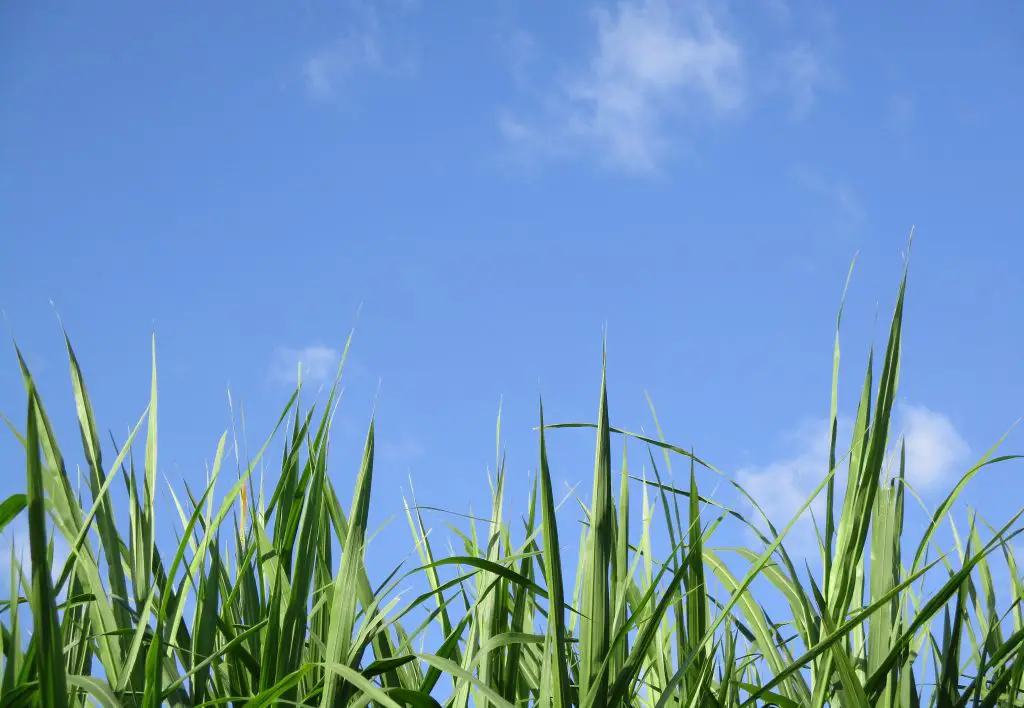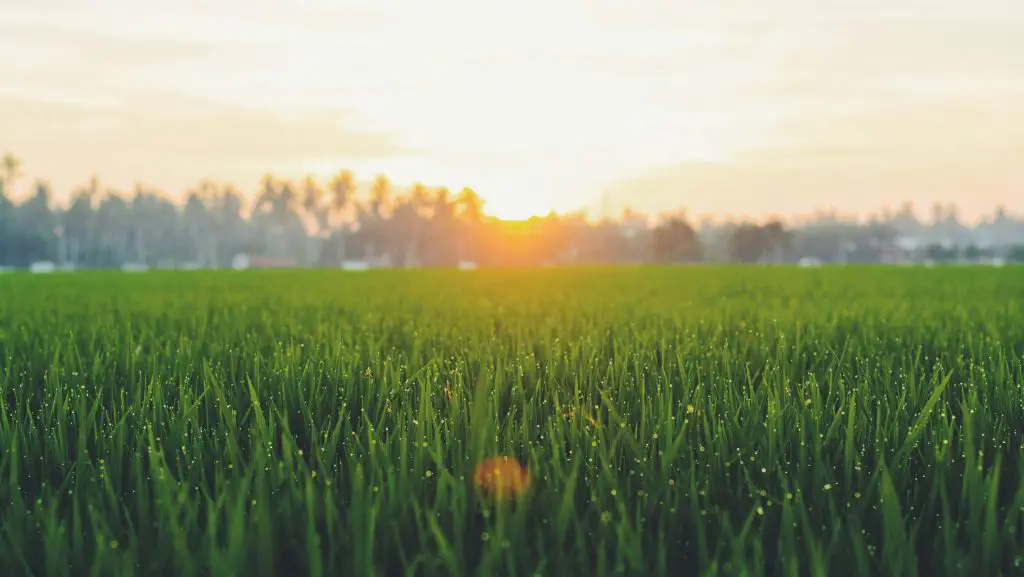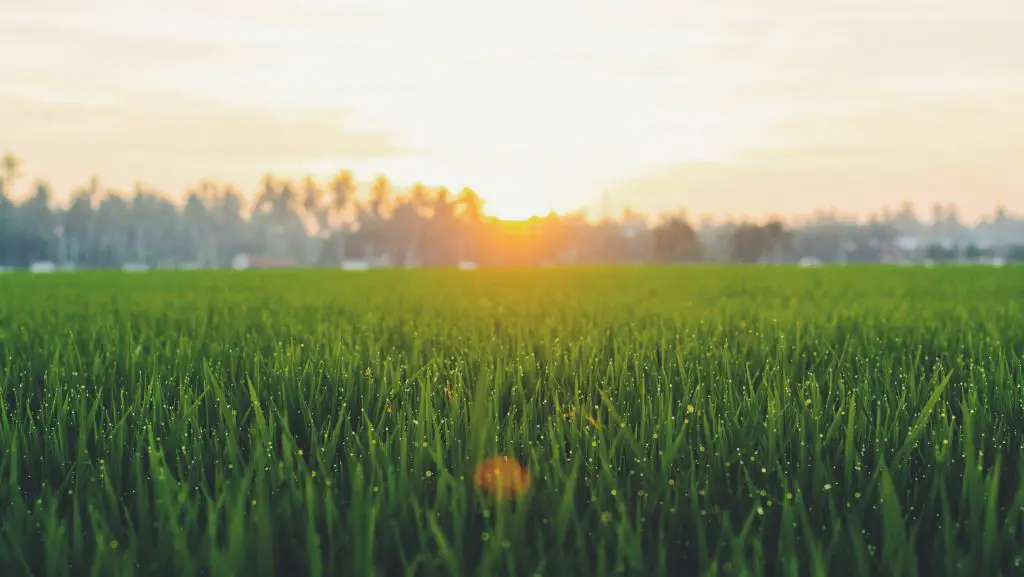Will Frost Kill Grass Seedlings? If you were considering growing grass from seed you may be wondering whether grass seeds can survive a frost particularly if you have planted the seed relatively late in the season.
Grass seedlings will survive frost successfully even if they are relatively young, however, typically it is best to aim to plant grass seeds when the temperatures are going to be at least 50°F (10°C) at night as this will optimize the rate of growth and ensure that the plants become more established before the difficult weather arrives in winter.
To ensure that you have the very best chance of getting reasonable germination from your seeds it is best to sow them approximately 2 months prior to the last frost, however, ideally it is best to plant in spring after all risk of frost has passed as that will maximize the rate at which the seedlings grow and the rate your new lawn gets established.

At What Temperature Will Grass Seed Remain Viable?
Even if you plant the grass seed very late in the season onto the soil and then the seeds experience extreme cold in your location it is unlikely that the seed will die. Grass seed has evolved to survive extreme temperatures down to around 0°F (-18°C) in most cases. This means that a box of grass seed can remain happily in your garden shed over the winter period even if it reaches temperatures below freezing.
However, grasses that have germinate are more susceptible to extreme temperatures than the seed by itself and will need some protection if it the weather becomes extremely cold.
Do You Need To Bury Grass Seeds?
Grass seeds need light to germinate and therefore are best sprinkled lightly onto the surface of the ground which has been raked over to a fine tilth. If you plant seeds at a depth greater than approximately half an inch there is a high probability that the grass says will not appear at all. To read more about this click here.
To improve the chances of germination it is also a good idea to ensure that the seeds have good contact with the soil as this will improve the growth rate. This can be achieved in a small areas by stepping on the seeds with your shoes. However, to ensure that the seeds remain in good contact is important to water the seeds in gently with a fine mist of water.

Can It Get Too Hot To Plant Grass Seeds?
Grass seeds generally grow best when the temperatures are approximately 68 to 77°F (20 to 25°C) during the day or even a little bit less. The reason for this is that because grass seeds are placed on the surface of the soil in most cases and they can suffer from a lack of moisture if the temperature is too hot. This can result in patchy germination.
Obviously the extent of moisture around can be dramatically affected by the temperatures so having temperatures greater than around 86°F (30°C) during the day will often lead to problems with germination and also seedling survival rates unless you are extremely diligent with your watering during these periods.
When Should You Mow A New Lawn
Once the grass seeds have become established the next obvious question is when is the first time that you should mow the new grass seed. Typically what we recommend is to allow the grass to reach a height of approximate 3 to 4 inches which may seem excessive, however, at this stage it is important to encourage the grass seed to maximize it’s rate of photosynthesis to help establish strong firm roots.
When mowing the grass for the first time it is important to cut it relatively high and still leave at least two inches in height.

Does Cutting The Grass Encourage The Lawn To Become Thicker?
Mowing the grass regularly does encourage the lawn to become thicker because grass behaves like all other types of plants which produce side shoots. These side shoots will progressively result in creating a thick and lush lawn more quickly.
When To Fertilise A Lawn
It is generally recommended that you do your main maintenance for any lawn whether it be new or old during autumn just before the worst of the winter weather arrives. At this time of the year it is recommended that you fertilize the lawn and also aerated it using a fork.
The reason that this is considered the best time to fertilize is because you can add a slow release fertilizer which will progressively feed the soil throughout the winter period so that the plant is ready to go in spring.
In addition to this it is also an ideal time to resow any areas of the lawn that have become worn or have remained patchy. This should ideal be you done around 2 months prior to the first frost to ensure the grass becomes established as discussed earlier on the article.
Hope you found this article useful and have great success growing your new lawn at home, if you have any additional comments or questions please leave them in the section below.
Relevant Articles
Is There Grass That Doesn’t Grow?
How Long Does It Take For Grass Seeds To Germinate?
Do Grass Seeds Need To Be Buried? Will They Germinate?
Why Do My Chives Look Like Grass? Is There Something Wrong?
